Have you wondered about the difference between water-based vs oil-based primers? Learn which one to choose for your next project here!
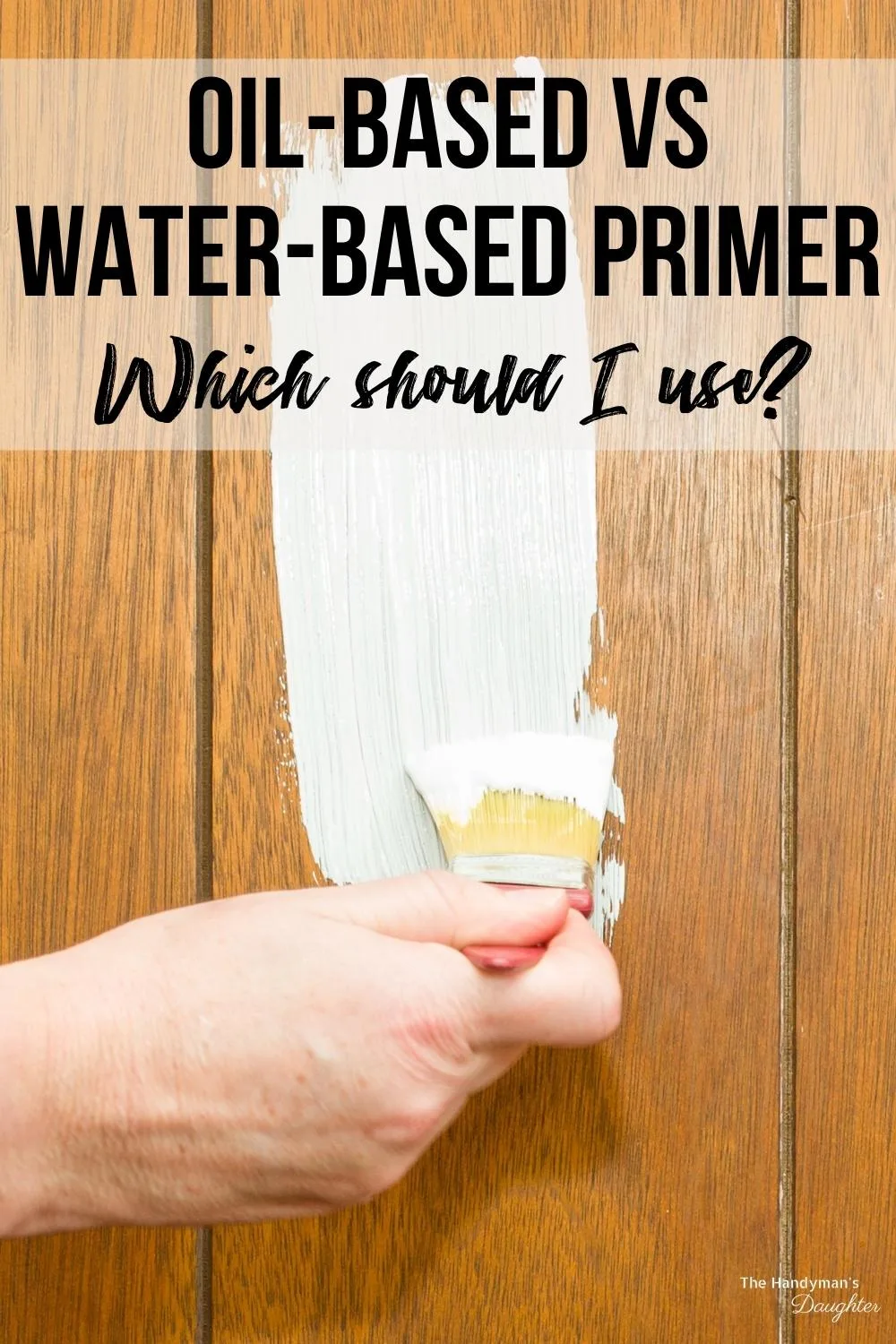
Water and oil don't mix, and picking the right combination for your painting project is key to a successful finish. Which one should you choose?
Oil-based primer is commonly used for its stain and moisture blocking qualities. On the other hand, people like water-based primer because it has fewer VOCs, dries quickly, and is much easier to clean up.
You can't apply an oil-based primer under a water-based paint, and vice versa. One won't stick to the other, so you'll end up with a peeling mess! Choose the right combination before you start, so you don't run into issues later on.
Do you want to paint over polyurethane or a clear top coat? Check out my tips and tricks for better adhesion, so it doesn't end up like this!

This post contains affiliate links for your convenience. Purchases made through these links may earn me a small commission at no additional cost to you. Please visit my disclosures page for more information.
What's the difference between oil-based primer vs water-based primer?
Both these primers have a place when it comes to indoor and outdoor painting. Let's start with a quick comparison.
- Oil-based primer uses mineral oil as suspension.
- Oil-based primer is difficult to clean (you need to use mineral spirits or paint thinner).
- Oil-based primer does a good job sealing stains.
- Oil-based primer is durable and water-resistant.
- Oil-based primer won't raise the wood grain, so you don't have to sand between coats.
- Water-based primer (also known as latex primer) is suspended in water.
- Water-based primer is easy to clean.
- Water-based primer is fast drying.
- Water-based primer doesn't release the same amount of harmful VOCs as oil-based.
There's one more type of primer that doesn't quite fit into either category:
- Shellac primer. It's not actually oil-based, but it has many of the same properties. I used shellac primer when painting over wood paneling in my workshop, and it worked great for covering up that dark wood!
Note: there are a TON of paint primers on the market. This guide will give you guidelines for the general differences between these two basic categories. However, there may be exceptions to these rules. For example, some oil-based primers are advertised as fast-drying and low in VOCs.
What is an oil-based primer?
Oil-based primer uses mineral oil as the suspension. This formulation has several benefits:
- Better adhesion. Some oil-based primers are designed for use on difficult surfaces. I used an oil based primer on my melamine kitchen cabinets to prevent the paint from peeling. You can even use it as a base layer to paint over tile or glass!
- Stain blocking. Some oil-based primers are used for stain blocking. It has better coverage than water based primer, so you can hide your toddler's wall art or cover up that ugly orange oak without it showing through the paint.
- Won't raise the grain. Oil based products won't raise the grain of the wood, which can result in a scratchy texture on the surface. If you want a super smooth surface without having to sand between coats, consider using an oil-based primer.
When should I use oil-based primer?
Here are several times to use oil-based primer:
- Stains and odor. If priming over wood, an oil-based primer will prevent some of the tannins in the wood from leaking through. Also, if there's smoke damage, oil-based paint will seal the odor and cover up the smoke stains better.
- Paint Choice. If you're planning on using oil based paint, use oil based primer. Latex paints will peel right off of oil based products, so choose carefully!
- Outdoors. Oil-based primer is great for exterior surfaces because it holds up better to the elements.
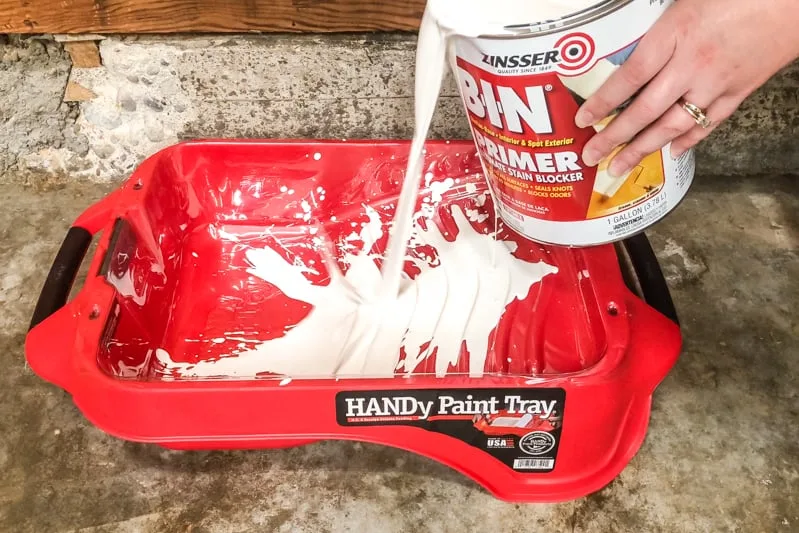
How do I use oil-based primer?
Always follow the manufacturer's recommendations for your primer. Pull out your magnifying glass and read the fine print on the side of your bucket!
- Safety. If your oil-based primer has a high concentration of VOCs, make sure to have adequate ventilation and a respirator. Also, if you're sanding between coats, use a mask and good eye protection.
- Keep mineral spirits on hand. Remember that you can't clean this stuff up with water, so if you drip on the floor, you'll need to wipe it up with mineral spirits.
- Prepare the surface. Sand the surface smooth - 150-220 grit should be sufficient. Also, you should clean the surface and allow it to dry fully.
- Stir your primer. Avoid adding air bubbles by using a wooden stir stick. Solid components can sink to the bottom, so make sure to mix it up thoroughly!
- Use the right painting tools. A natural hair paint brush is best for oil based products, but most nylon paint brushes and rollers are suitable as well.
- Apply the recommended number of coats. Bare wood and excessive stains may need two coats for the best results. Follow the guidelines specified by the primer for recoat times.
- Dry time. You don't want to rush the dry time. It depends on the weather and humidity in your area. Check the can to see how soon you can start applying the finish paint.
- Clean your brush with mineral spirits. Soak your brush in mineral spirits or paint thinner to dissolve the primer on the bristles.

Frequently Asked Questions about oil-based primer
Are oil-based primers better?
Oil-based primers are usually better at hiding stains than water-based primers. However, there are so many brands and variations of oil and water-based primers; you may need to buy a few samples and test them out to determine which gives you the best result for your situation.
Is oil-based primer safe?
You should always avoid inhaling primer fumes. Oil-based or solvent-based paint releases VOCs or volatile organic compounds. VOCs have been shown to be harmful to humans in high concentrations. You can stay safe by keeping your work area well ventilated and wearing a respirator.
How do I tell if the existing paint is oil based?
There's a simple way to test if the existing paint on your project is oil or water based. Soak a cotton ball in acetone (or nail polish remover) and rub it on the surface. If the paint becomes soft or the color transfers to the cotton ball, it's water based. If it looks the same, it's oil based.
What is a water-based primer?
Water-based or latex primer uses water as the suspension. Water-based primer comes with several advantages over oil-based primer, which I'll discuss in more detail below.
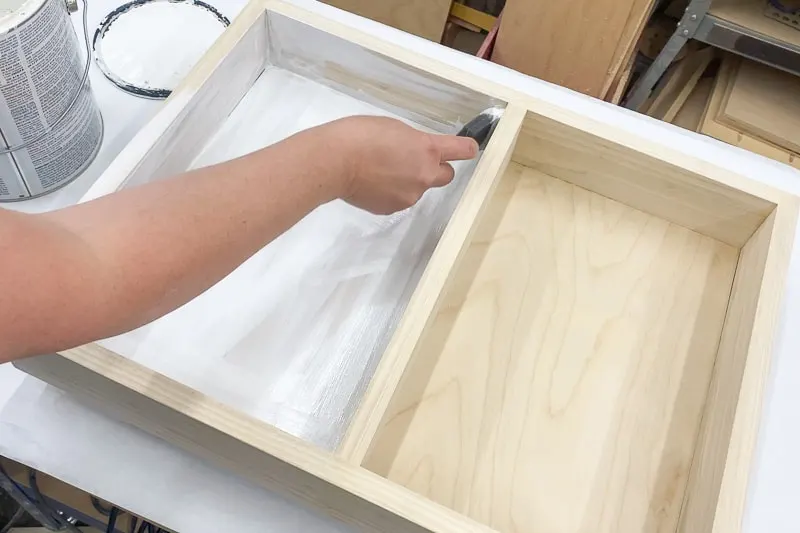
When should I use water-based primer?
Use water-based primer when you want to reduce the amount of VOCs and when you plan to use water-based or latex paint on top.
Water-based primer is easy to clean up. You don't need any special mineral spirits or paint thinner - wash the brushes in water and you're ready for another day of painting!
If you're in a hurry, water-based primer is fast drying. Once the water in the product evaporates, the primer is dry. This means you can probably begin painting your first coat of latex paint on the same day.
How do I use water-based primer?
In general, follow the steps listed on the container - they're there for a reason!
- Safety. Good ventilation is a must.
- Prepare surface. The surface should be smooth and free of sanding dust and dirt.
- Stir the primer. Make sure to mix up all those solids at the bottom of the can.
- Test. Always test the primer with the paint you plan to use before committing to the whole project. This gives you a good chance to double-check if you like how the primer works.
- Paint it on. Like paint, don't place too much primer on the brush at first. Your goal should be to build up thin layers, not slop on one thick layer.
- Sand between coats. If you're priming raw wood, you will find that the first coat of primer feels rough to the touch once it's dry. Unlike oil-based products, water will raise the grain and needs to be sanded back down. A light pass with 180-220 grit sandpaper is all you need to make it feel smooth again.
- Repeat. Many water-based primers need a second coat to get adequate coverage. However, if you're not covering dark paint or hiding stains or smells, you might get away with one coat.
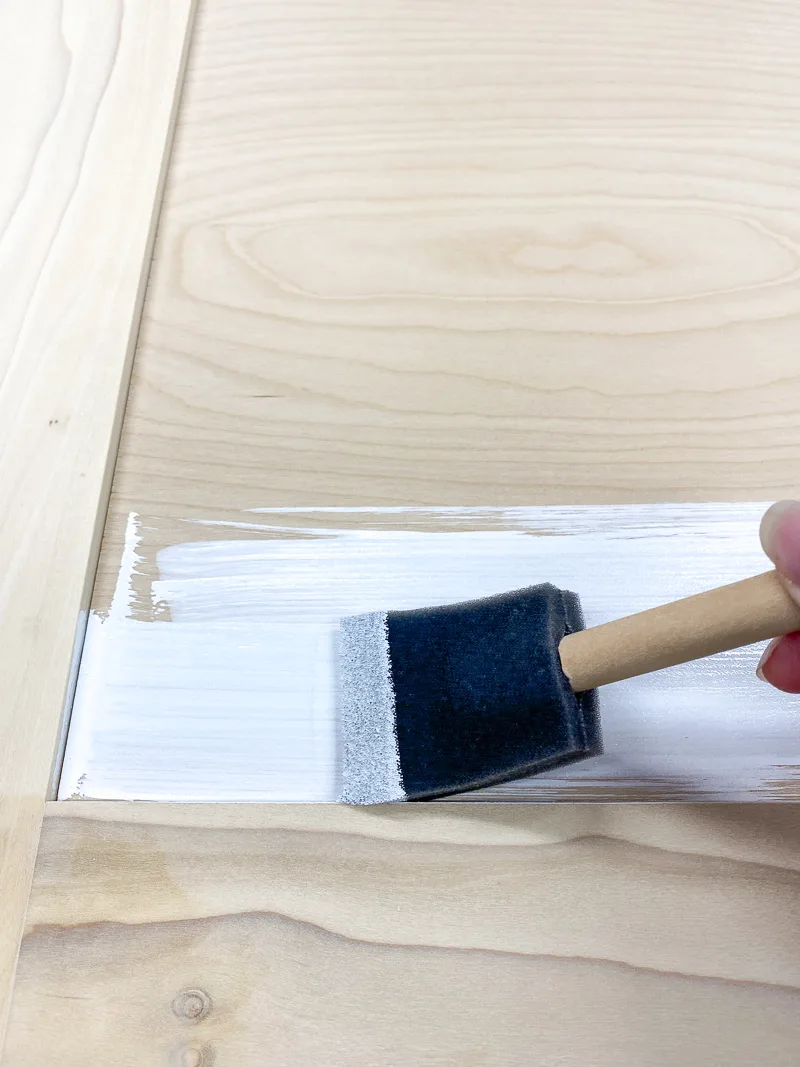
Frequently Asked Questions about Water Based Primer
Can I use water-based primer on kitchen cabinets?
Yes, you can use water-based primer on kitchen cabinets. However, since cabinets take a lot of abuse, I'd recommend using a high-quality primer that won't scratch off or bubble. Kitchen cabinets aren't the time to skimp!
Do I need to sand between coats of primer?
One drawback to water-based primer is that it raises the grain of the wood. You'll notice that the surface feels rough once the first coat of primer is dry. Use a fine grit sandpaper to knock down the raised grain and create a smooth finish. You only have to sand after the first coat, unless you end up with bubbles or drips in your subsequent layers.
What happens if you don't use primer?
If you don't use primer, several things can happen. First, your paint might not adhere properly, giving you a flaky finish. Second, the stains and color of the wall beneath might show through your final coat. Finally, using a primer reduces the number of final coats of paint you need. Primer is typically less expensive than latex paint, so you won't need to buy as much to get the same effect.







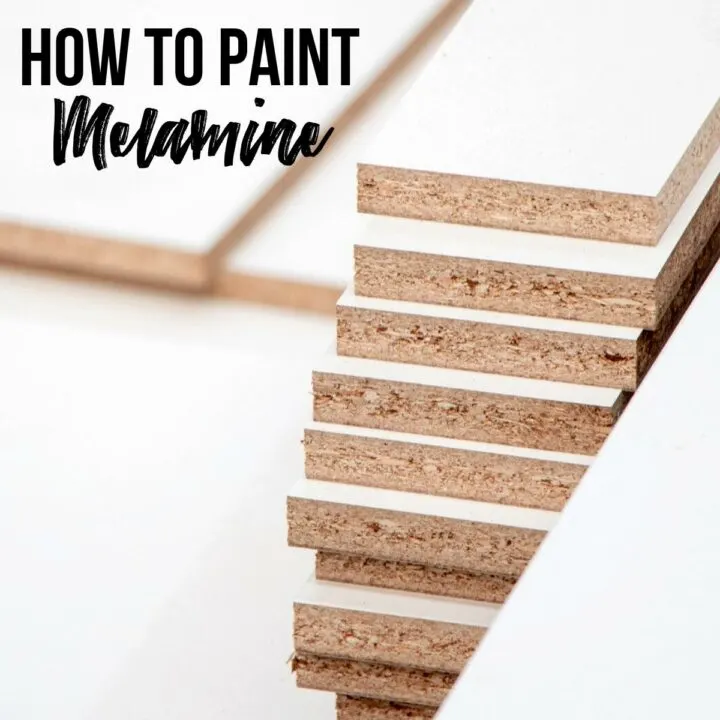
David Gray
Wednesday 28th of September 2022
I have heard that using oil-based primer on exterior surfaces, where you are priming ahead of a latex topcoat, is not a good idea because it isn't as resistant to the expansion and contraction of the wood, heat and cold, and the like. As a result, it tends to crack, causing chipping and flaking sooner than a latex primer would.